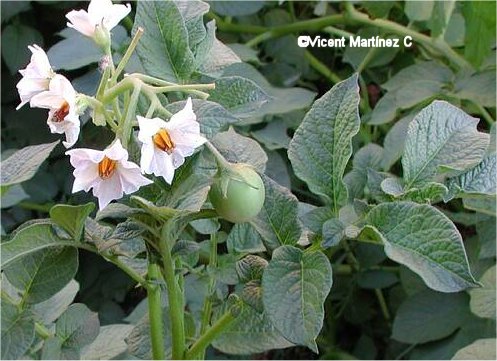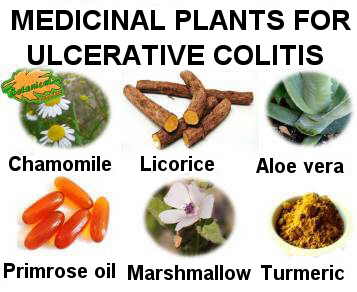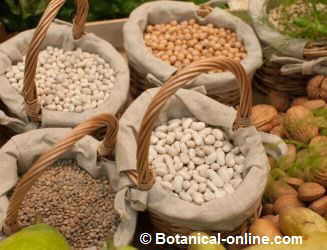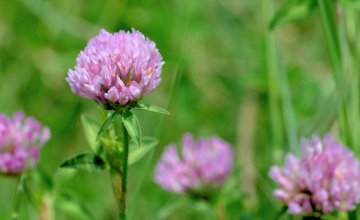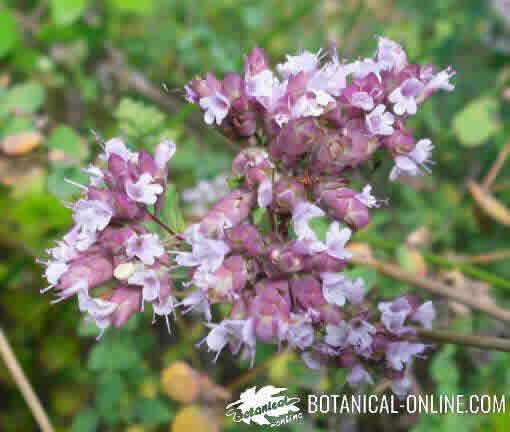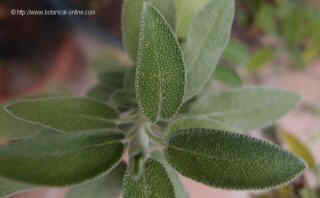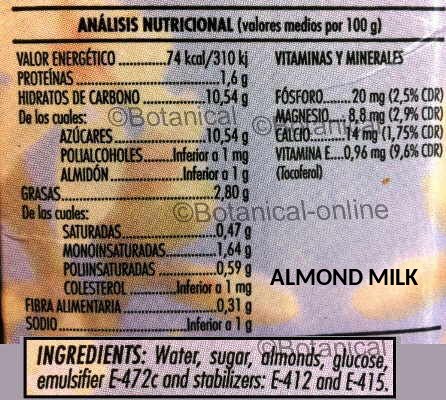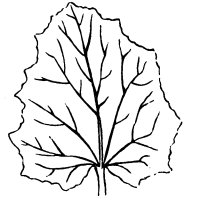Contents
- 1 How to grow wheat
- 1.1 Cultivation of wheat (Triticum sativum)
- 1.2 Characteristics of wheat plant
- 1.3 Wheat. Irrigation and moisture.
- 1.4 Wheat. Use and varieties.
- 1.5 Wheat. Temperature and exposure
- 1.6 Wheat. Planting, germination and cultivation.
- 1.7 How to plant wheat?
- 1.8 How to harvest wheat?
- 1.9 Wheat. Types of soil and fertilizer.
- 1.10 Wheat. Plagues and diseases.
How to grow wheat
Cultivation of wheat (Triticum sativum)
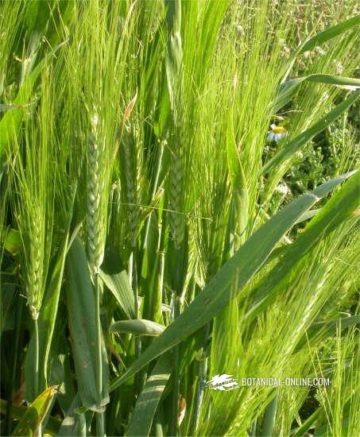
 Characteristics of wheat plant
Characteristics of wheat plant
Wheat (Triticum sativum Lam. = Triticum aestivum (L.) Thell) is a cereal of the Gramineae family, a family which includes other important cereals as foods as rice, maize, oats, sorghum, etc.
Wheat is an herbaceous annual plant up to 1.2 m in height. The stems are erect and present structure of cane, that is they are hollow inside except at the nodes. The growth of stems is not apical but produced by stretching of the tissues above the nodes (meristem). The leaves grow from the nodes. Like the rest of grasses, They have two parts: the petiole sheath that surrounds and protects the meristem and growth zone and the limbo that is elongated in shape and has parallel veins.
Flowers are gathered in spikes. Each spike consists of a main axis or rachis on which the spikelets are distributed laterally. These consist of a main axis from which some filaments arise terminated by the glumes that enclose the flowers until they begin to mature. Besides the glumes, flowers are protected by two bracts: the inner is called palea and the outer is called lemma. The latter is topped with a beard that gives the ear of wheat a feathery appearance.
The wheat flowers are not very showy. They do not have petals or sepals. Each female flower consists of an ovary from which two styles emerge, finished with two feathery sticky stigmas each. The male flowers have three stamens that can be gold, green or violet.
The fertilization and maturation of the egg produce the wheat grain, a fruit of the caryopsis type.
 Wheat. Irrigation and moisture.
Wheat. Irrigation and moisture.
Wheat is a plant that is grown in many climates with different types of precipitation. The threshold rainfall required is located on about 260 liters per year. However, it is desirable that these rainfall occurring during growing and does not need too much rain during the cold seasons. The most common range of rainfall is between 400 and 750 liters per year, although there are crops in areas with rainfall of up to almost 3000 liters per year.
In irrigated crops, a big watering is done a few days before planting when the ground has been prepared. Then it may make a couple of waterings: when the plants begin to leave the land and when they start to form the rod.
An excess of water is responsible for root rot or the appearance of numerous diseases.
 Wheat. Use and varieties.
Wheat. Use and varieties.
Most of the world wheat production is for feeding. Almost 75% of this production is used for the production of wheat flour. Most of this flour, especially that from soft wheat varieties are used for the production of bread. The flours from hard wheats are used mainly for making cakes, biscuits, homemade meal.
In addition to flour, we must consider that a good proportion of grain is saved for new plantings. A smaller proportion is used for the manufacture of industrial products such as starch, gluten or dextrose. Lower quality grains and by-products of refining are also intended for feed industry.
Wheat straw can be used for animal feed or bedding for livestock. This also goes for the manufacture of pulp and paperboard or as an insulator in construction.
Wheat, along with barley, or on its own, is used for beer production
 Wheat. Temperature and exposure
Wheat. Temperature and exposure
There are many varieties of wheat that allow it to be cultivated from sea level to over 4000 meters. The most productive areas are between 25 and 600 meters above sea level.
The wheat crop allows quite different temperatures. We can say that the ideal growing temperature is between 10 and 24 º C. The minimum temperature should not be less than 3 º C nor exceed 33 ° C. Too high temperatures in the time of grain formation can produce shriveled grain, caused by lack of irrigation and is manifested in the form of a light, dry and wrinkled grain.
 Wheat. Planting, germination and cultivation.
Wheat. Planting, germination and cultivation.
There are the following types of cultivation of wheat, according to the time of planting:
– Winter Crops: These are planted in autumn, usually between the months of September to November and remain dormant during the winter. This type of planting is done mainly in places where the terrain is often found covered with snow during the winter which protects the plant from freezing.
– Spring Crops: These varieties are planted in spring (from early March to mid April). They have a much shorter growing season which is an advantage over the lack of water that can degrade the quality of the grain in very dry periods. They are planted in colder areas where the climate does not allow winter crops and where the collection should be done before it starts to get cold and freezing the field.
In temperate areas both types of crops can be performed, although the most common is to winter crops. Winter crops have an advantage of providing a higher yield because the plants have the option to root better, although they are more likely suffer the rigors of a period without rain because they must be collected later.
Each environment must use the qualities of the main types of grains to improve performance. With this in mind, we can consider the following varieties of wheat:
– Hard Red Winter Wheat: It is the variety most commonly used in cold and bare regions of the great continents. It is the most used in the interior plains of the United States. It is the type of grain used in this country and is ideal for climates with winter temperatures well below 0 º C. and with little rainfall. Most of the bread in the U.S. is made from this type of grain.
– Soft red winter wheat: It is often planted in cold and wet places where previous variety can not succeed. In the United States, it occupies the northeast coast and the Great Lakes area. With the flour of this type of grain, most cakes and biscuits are produced in this country.
– Hard Red Spring Wheat: You use this variety for cold places with dry climates and land rich in humus. It is used to make bread.
– Durum: It goes to the production of pasta (noodles, spaghetti, etc.). It is not suitable for making bread or pastries.
– White Wheat
 How to plant wheat?
How to plant wheat?
To plant wheat you are required a series of previous work aimed at preparing the ground. During the winter you must fertilize, plow and grade the soil. Plowing the land is required to disaggregate the soil, which is essential for the plant to thrive.
Leveling the soil will allow a proper harvesting. These tasks are traditionally performed by plows pulled by animals and wooden planks on which the farmer stood to complete the level. At present, the process is mechanized and is done by tractors fitted with large discs and heavy rollers.
Sowing is currently done in a mechanical way, as long as the ground is sufficiently prepared or they are not too steep. The tractor pulls special plows, that, while they open the soil, they drop the seeds, which have been previously treated with fungicides to prevent spoilage before germinating.
Grooves are typically spaced about 16 or 17 cm and the seed is planted between 3 and 6 cm or 10 cm when the planting has taken place too late and cold could damage the seed. Traditionally, this task was done by hand with a technique known as “Broadcast seeding” and that consisted on spreading the seeds with one’s hands as one walked over the furrows.
A few days after planting the soil will be plowed shallowly to remove weeds. In subsequent periods, you may apply herbicides to prevent herbs growing. In more modest family farms this work is sometimes performed manually.
 How to harvest wheat?
How to harvest wheat?
Wheat harvesting is carried out between May and October, depending upon the variety and type of climate, although the most common is to harvest during July and August when high temperatures have dried the plant and when the environmental humidity is very low for seed or straw can withstand. Formerly, and still today in small farms or in less developed cultures, this was done manually with the use of sickles.
At present most of the harvest is done with the help of machines collectors. These are a kind of tractors fitted with a front roller that, when turning over, drags the plants, to a large comb provided with moving blades that cut and separate the chaff from grain that is being threshed and baled. The straw is ejected to be packed later. Finally, only the last 25 or 30 cm of dry reed are left (Stubble)
 Wheat. Types of soil and fertilizer.
Wheat. Types of soil and fertilizer.
Although wheat can grow in poor lands, it prefers rich soils. The best land for growing wheat is the loose one, provided with good drainage to avoid fungus growth. Avoid the soil where water stagnation occurs, too compacted soils or those that prevent the normal development of roots.
Wheat does not support sandy and peaty soils or those with a high acidity. The ideal soil is neutral or alkaline with a pH between 5.5 and 7.
Among the possible necessary fertilizers we would have the following:
– Nitrogen: A suitable nitrogen level is essential for the development of the plant. Nitrogen is necessary for the formation of proteins of the plants. Between all these, chlorophyll is one of the most important. The lack of this component is manifested in yellowing in times of growth of the reeds.
Traditionally, the nitrogen was incorporated into the soil through crop rotation of wheat with legumes, which meant no need to add it.
At present, for soils which have not been previously planted with legumes, you should provide additional quantities of nitrate in a typical proportion of 30 kg per ha. Sometimes you will need an analysis of soil nitrogen levels to avoid its excess. This could lead to a too high plant density with the consequent possibility of disease due to lack of aeration.
– Phosphorus: This is another element that can not be neglected if we want the plant to grow well and bear abundant fruits. It is appropriate to apply it in the form of soluble phosphorus pentoxide (P2O5) when the plant starts to grow well in spring. Coinciding with the first application of nitrogen in the form of a compound fertilizer NPK (nitrogen phosphorus (P2 O5) and potassium (K2 0)
– Potassium is necessary for the proper functioning of the leaf. Without adequate potassium they are not able to open wide the stomata for the transpiration and gas exchange with the atmosphere. Signs of a lack of potassium are the appearance of chlorosis, burning of dry leaves or bending of the ends of the leaves. Without adequate levels of this mineral, grain is little filled, because this mineral is necessary for a good balance between carbohydrates and proteins. Potassium can produce a better hay and a heavier grain. Sandy soils, which have been subjected to irrigated crop rotations are often the most deficient. It is applied in the form of potassium chloride along with the seed or near to it.
– Sulphur: It can be applied when symptoms of deficiency such as yellowing of the plant with adequate levels of nitrogen, growing in sandy or low organic material.
– Other elements that could be necessary are magnesium or calcium.
 Wheat. Plagues and diseases.
Wheat. Plagues and diseases.
The main plagues that affect it are:
Aphids (Aphidae): These are insects that suck the sap through their tubular mouths. Among all, we have, for example, the cereal aphid (Schizaphis graminum). Besides stealing the sap, the secretions of these animals are used by many fungi to thrive. Treatment may include the use of appropriate insecticide or the use of alternative methods such as using insects that eat them.
Bugs (Scutelleridae) The most famous and dangerous of all is the Green Bug (Eurygaster integriceps) which feeds on the stem in the early stages of wheat formation, which can cause stunting of the wheat, deformities in the grain or underdevelopment.
The worst of this plague is the ability of adults to introduce their toxins in the grain which produces a change in the chemical composition, preventing the formation of gluten and therefore making it not suitable for bread flour. It was found that with only 1% of the grains affected it can ruin all the rest.
This type of bugs usually hibernates in the fields or forests near wheat fields, when these have been collected. They return to them in the spring to put their eggs. When the counts show a percentage of 10 adults/m2, you should spray the crop to eliminate and prevent it from spreading.
The plague affects many regions of central Europe, having been widely reported in countries such as Hungary and Romania. It also appears frequently in the Middle East.
Locust (Lacusta migratoria). It is a pest in some African and Asian countries which devours entire plantations. There is no treatment for it.
Wheat stem sawfly (Cephus cinctus) is a common pest in some countries. The damage is produced by the wasp larvae that feed inside the stems until they kill the plant. The solution is to use pest-resistant species. It is necessary to break either infected cultures to prevent its spread. The organic solution planted passes the edges of the fields with plant species that attract the insect, like the grass Bromus inermis. This pest is very common in the plains of southern Canada and northern United States, affecting only those varieties with a later development.
The main diseases that affect the wheat are:
– Dwarf Bunt of Wheat. (Tilletia controversa) is a fungal disease that affects the winter wheat. Affected plants have a less than healthy development. When you look at the spikes you find that many of the grains have been replaced by dusty black spore masses. The plants have a characteristic smell like stale fish.
Infection occurs during the winter crops covered by snow. The highly resistant spores that can survive and more than 10 years inactive. To prevent infection it is convenient to use summer varieties are not affected by the fungus or winter varieties resistant to disease. Proper treatment of seeds can help prevent infection.
– Coal wheat. (Ustilago nuda) It is another fungal disease with symptoms similar to the blight. The infection comes from within the grain because the fungus enters the endosperm during grain formation, so that, when originating new plants, are infected.
The treatment involves the use of an appropriate fungicide if the plant is infected. Prevention of this disease is achieved using guaranteed seeds have been treated previously.
– Septoria: There are two types of septoria of wheat produced by two types of fungi in the genus Septoria (Septoria nodorum / Septoria tritici). The first produces lesions on leaves in the form of lenticular spots surrounded by a green line. Rarely the infection affects the stems that bend and break. In the case of S. tritici symptoms manifest in the form of gray-green lesions on leaves.
These infections occur during periods of abundant moisture and warm climates and can be caused by several reasons: windblown spores by rain or by planting seeds that were already infected. The treatment involves the use of appropriate fungicides, while the use of resistant varieties is the most effective prevention method, along with other practices such as crop rotation, deep plowing and abundant land
– Powdery mildew (Blumeria graminis): This type of fungus produces a gray-white on the upper leaves, beginning in the form of circular spots, is being expanded to produce larger areas of brown that eventually destroy the leaves. Another feature of this disease is its ability to produce large plants sprouting new stems without reaching born cause seeds.
This infection peaks in the early spring when the temperature lies above 20 º C and moisture is abundant. As the heat increases or decreases its virulence temperature decreases while its activity may continue between 10 and 22 º C. Similarly the presence of too much nitrogen in the soil, along with the use of semi dwarf varieties.
Fungicide use, especially for winter varieties, and nitrogen control can help prevent excessive development of this disease.
– Fusarium is a type of disease caused by Fusarium fungi among which we can point out the following: Fusarium graminearum, Fusarium nivale and Fusarium culmorum.
In addition to the corresponding damage to the plant resulting in lower production, one must consider that it is a fungus that produces mycotoxins which are toxic to animals and people.
This type of fungi, that affects so much to the wheat as to rice, barley, corn or rye, and many wild plants developed especially with hot conditions and humidity, being the ideal temperature of 15 ° to 20 ° C and humidity above 90%.
The treatment involves the use of appropriate fungicides, along with the selection of more resistant species, the practice of deep plowing or constant crop rotation with species non susceptible to infection are the best ways to control this disease.
![]() More information on wheat.
More information on wheat.

 Wheat. Irrigation and moisture.
Wheat. Irrigation and moisture.